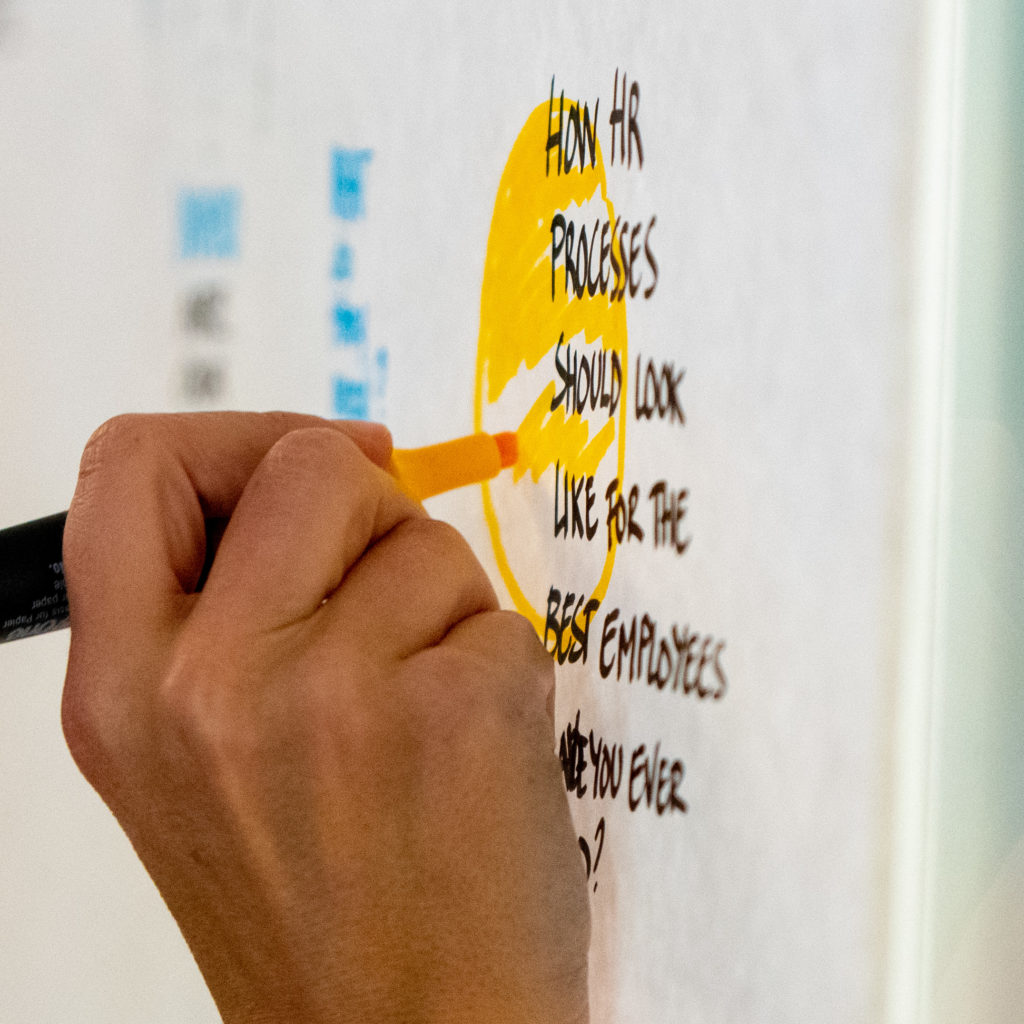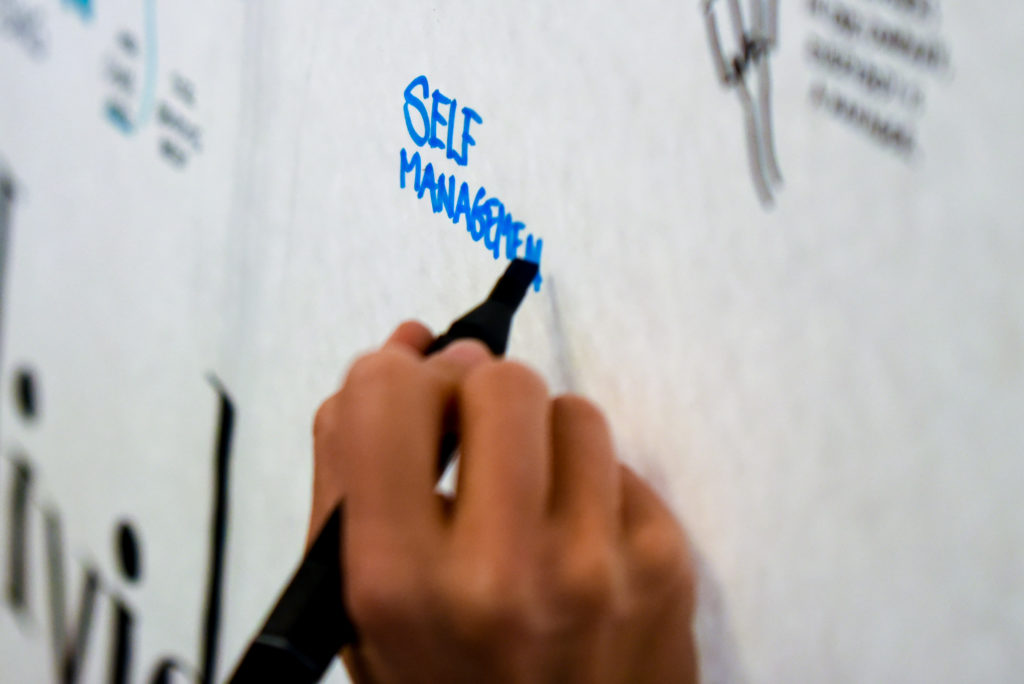Agile, and Agile methods, like Scrum and Kanban, have had tremendous success over the past few decades, but still, most organizations are not getting the value and expected outcomes from their Agile initiatives. A big reason is that people often confuse Agile methods, or applying the methods in one department, with agility, which means having the ability to adopt these methods and deliver value to both the business and customers. Having that organizational ability is the essence of Business Agility. You can also refer to it as scaling Agile to the whole organization.
As co-organizer of the yearly Agile People Sweden conference, we have recognized that this is a current challenge for most organizations today, and hence the Business Agility is the theme for this year´s conference.

I had the opportunity to be interviewed by Kari Kelly from Atypical Workplace LLC. It resulted in 6 tips for how your organization can create value through Business Agility.
1. Remember the difference between “Agile” and “agile”
When I come into an organization they’ll often say, “We’re doing Scrum! We’re very Agile!”. However, when I assess the flow of value from idea to the customer, often it’s many months or a year or so, in practice. Sure some of their teams may be using Scrum or Kanban and therefore experience a few gains in efficiency at a team level, however, the organization itself is not really being agile, i.e., creating value in a fast way to the customers.
Business Agility is the ability of an organization to continuously optimize, adapt, and learn and actually create the outcomes that are possible. Simply adopting Agile frameworks and practices like Scrum does not guarantee agility at an organizational level.
2. Start with Agile and work towards agility
Although Business Agility does start with some Agile teams to get some efficiency gains, this is only the beginning. Suppose you introduce Scrum and/or Kanban to all your teams. Moving from idea to customer value in a very short time requires connecting these teams so you start getting flow and delivering value faster to customers. This is critical, but still not enough.
You need your organization to quickly adapt, innovate, and adjust to different needs, which can only happen when the limiting organizational structures are removed, especially those from Finance and HR. For instance, replacing fixed budgets with rolling forecasts and replacing company structures with salary formulas and profit sharing. This will help your organization enjoy true Business Agility so the organization itself can be agile. To adapt, learn, and adjust. and then people will also be more engaged, being able to use their full potential as it would free up people’s potential for creating better value and doing more good in the world.

3. View your stakeholders as co-creators and collaborators:
The ultimate goal of Business Agility is to continuously optimize, adapt, and learn and actually create the outcomes that are possible. This requires departments working together to realize ideas from inception to customer value as quickly as possible. So instead of each department thinking, “we are one department and we have some stakeholders with whom we need to align and collaborate”, departments need to be thinking, “How can we create environments that actually allows for co-creating and collaboration with stakeholders?”
When you work with innovation or uncertainties in a really competitive environment, you actually need to be really good at handling this complexity and competitiveness, so to do that, it’s too complex for one person or even a single team to solve the problem. You need to involve different aspects and experts, taking multiple perspectives, all relevant people in the organization, so creating a collaborative environment involving all the departments and stakeholders is critical.
4. Think of the organization as a living, adaptable organism rather than a fixed, rigid machine:
I think many organizations have are skilled at making small iterations and experimenting with products and getting customer feedback at a team level, but not necessarily at an organizational level. This is why I think the shared mental models of organizations need to change from a rigid, fixed machine where teams and people are like replaceable parts to a living, adaptable organism that can learn, grow, and improve.
5. Apply Design Thinking to your whole organization:
The kind of design thinking, exploration, experimentation, and testing that happens within the most successful teams in their day-to-day operational work can be scaled to an organizational level, which includes scaling the mindset and tools. I think this is another great way to understand Business Agility and how it’s different from simply adopting Agile frameworks and practices.
6. Decentralize authority and empower people to make decisions at the point of work:
We are now in such a complex, fast shifting environment, so if there’s a new trend or new ideas, those signals are so weak that you need to become more decentralized so people can pick up and act on those signals. And if you try to wait for it to kind of go up the hierarchy, then the information will be too abstracted, so you cannot really get your head and mind around this kind of fast shifting data. So you need to empower the people and decentralize and then make meaning of the information with transparency and common goals and direction so everyone can act on it in the best way.

If you want to explore Business Agility I recommend you will visit Agile People Sweden conference. This year it is October 23-24th in Stockholm agilepeoplesweden.com.
(Thanks to Monica Madrid for the graphics)
What tips have you found useful for creating value through Business Agility? Leave your thoughts in the comments below!




The shared materials are very interesting and helpful towards Business Agility.
Most of African companies the issue of Agility (Agile) is still new and mostly they follow “Waterfall Approach” while the business environment is so stiff the competition is very high.
Hi Andrew. Great that you found it helpful. It sounds like there is a great opportunity for those African companies that get Agile to have really good business advantage.
Excellent approach. I really would like to learn more about it. As an internal OCM consultan I have been applying some of your recommendations to have a more collaborative teams within a company.
Hi Alejandro. Great that you have had some success. Would be interesting to know more of what you have tried and what you learned. I am working on a new post about collaboration and harnessing collective intelligence with some more recommendations. Check back for it in August.